Keeping Chickens Safe from Predators
- Todd Muse
- Nov 19, 2017
- 7 min read
The pleasures of keeping chickens are plenty. If you are anything like me and thousands of other people, you not only appreciate the eggs, but have come to love those sweet things. The loss of one hen can be devastating emotionally, as well as, the investment lost made for the sake of egg production. That’s why we not only want to keep them healthy, but we want to keep them safe too. Chickens have many predators. It seems EVERYTHING wants to eat chicken. This makes it a challenge to keep them safe.

Since chickens have so many predators, the best way to work on keeping them safe is to do a little research on what may live in your area and then work on methods specifically suited to protect from those predators.
When I was growing up in the mountains of Virginia, I remember some of the predators that would harass my dad’s flocks were the weasels, skunks, bobcats, and opossums. But living here in South Carolina the thing that plagues us the most are hawks, foxes, Bobcats, coyotes, and the neighbor’s dogs. That’s why knowing your area is the number one step in knowing how to protect your flock.
Give your flock a secured location to sleep safely at night. If possible, keep them inside a coop with doors that can be secured with a lock. Some predators such as racoons can unlock some latches, so outsmart the predators and make the latch on the door predator proof.

There are electronic doors available for those who can’t get out to open the coop every morning and close every night. They can be set to close at dark and reopen in the day.
For our chickens’ run we use avian netting to protect from hawks. This netting has saved our girls plenty of times.
Give your flocks a roost inside the coop off the floor and keep the coop clean with no food left inside. Food inside the coop will attract rats and rats are not only a predator for some chickens, but will chew holes out which makes an entrance for other predators. Be sure to remove dead birds immediately, as the smell will also attract predators.

When letting your flocks go out, it may be necessary to keep them safe within a chicken run covered with welded wire. Make sure that predators are not able to dig under the fencing. Hardware cloth is preferred over chicken wire, predators can chew through chicken wire. Chicken wire is only good for keeping chickens inside, but not very effective to keep predators out.
If you are keeping your flocks inside a chicken run, remember there are those
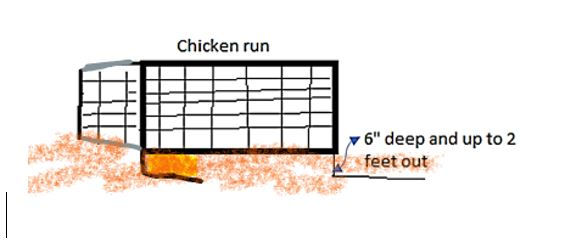
predators that will dig beneath the fence or wall to enter the grounds. For this reason, we recommend burying hardware mesh attached to the fence line then go about 6” deep down from the wall and then out about another foot or two. This way when they begin to dig, they will run into wire all the way foot or two.
If you want to free-range your flock and local predators are a problem, consider getting guardian dogs. If well-trained, livestock guard dogs are extremely effective at protecting against predators, day and at night. But this requires that the dog always stays with the flock.
If your flock has already been attacked, here are some signs to look for to recognize what type of predator you are dealing with.
If you have found your adult birds are missing but there are no signs of what happened, the predator probably is either a dog, a coyote, a fox, a bobcat, a hawk, or an owl. These predators usually kill and then pick it up, and carry off an adult chicken. Hawks generally take chickens in the day, and owls usually take them at night.
If you have missing chicks with no signs of disturbance, the predator may be a snake, a rat, a raccoon, or a house cat.
If you find birds dead but not eaten and have parts still intact, a weasel may have attacked the flock. Members of the weasel family, including mink, kill just for the fun of killing. Sometimes, the chickens’ bodies are bloodied. Also, there may be eaten internal organs.
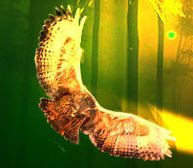
If birds are dead but not eaten with a missing head, the predator may be a raccoon, a hawk, or an owl. Raccoons sometimes pull a bird’s head through the wires of an enclosure and then can eat only the head, leaving most of the body behind. Raccoons may work together with other raccoons scaring the chickens to the far end of a pen and the other picking off the birds’ heads.
If birds are only wounded, not dead, various predators may be to blame. If birds show signs of bites all over, a dog may have attacked the flock. Dogs do not have sharp enough teeth to consume animals cleanly.
If there are wounds on the breasts or legs of young birds, an opossum may be the problem.
Bites on the hocks of young birds often indicate that rats have preyed on the flock.
If birds have bites and show signs that their intestines have been removed through their vent area, the predator may be a member of the weasel family.
If eggs are missing, one of several predators—including skunks, snakes, rats, opossums, raccoons, and crows—may be at fault.
Here are some of the ways to resolve what has plagued your flock.
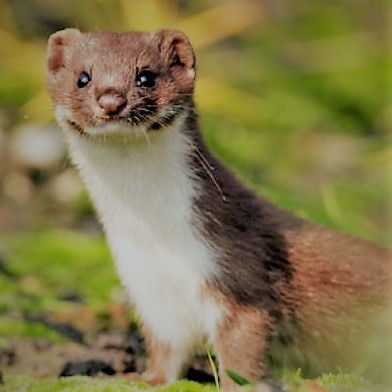
Weasels
Some predators such as weasels are seldom seen and rarely trapped. They never hibernate and are constantly active. When the smallest weasel kills, it wraps its body and limbs around its prey and kills with a bite to the base of the skull.
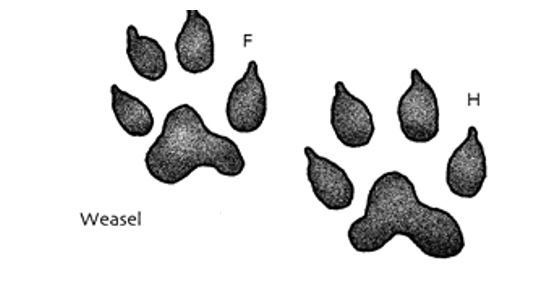
A small weasel can squeeze through holes as small as 1/4-inch in diameter. Consequently, they typically can get through chicken wire. Weasels must eat food equal to four times their body weight each day, so weasels are voracious eaters.
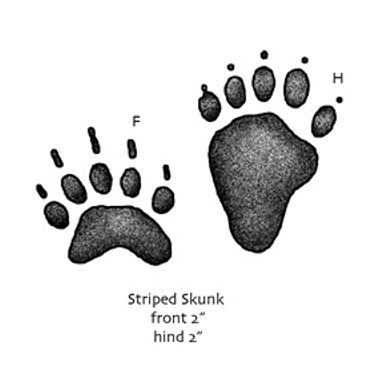
Skunk
When a skunk attacks a flock, it will kill only one or two birds and maul others considerably. Skunks love to eat eggs, usually, they will punch a hole and lick out the egg. Eggs that has been eaten by a skunk may appear to have been hatched, except that the edges of their openings are crushed. If a skunk removes an egg from a nest, it rarely carries them more than 3 feet away.
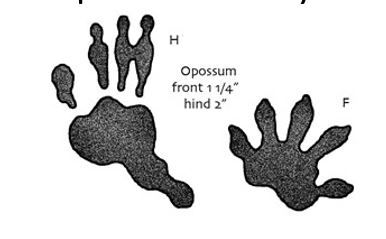
Opossum
Opossum usually kills one bird at a time, often mauling its victims. They are messy killers and will often chew egg shells into small pieces inside the nest. Opossums usually begin feeding on adult poultry at the vent opening. They will consume young poultry completely usually only leaving behind a few feathers.
Snakes
Rat snakes are known to eat eggs, young chicks up to 4 months old and even kill grown hens. A snake must be able not only to enter the enclosure but also to exit after swallowing its prey. Typically, snakes able to enter through gaps that are 1/4-inch in diameter or smaller and they do not cause damage, therefore it’s not always obvious there was a snake.
Hawks
The most common poultry eating hawks are red-tailed, red-shouldered, and Cooper’s hawks. Hawks typically take their prey during the day. They have very keen eyesight and scan for prey from elevated perches. A hawk will swoop down and land on its prey with its talons, often killing the prey on impact. A hawk may carry off the young or bantam bird and eat it elsewhere, leaving no indication of its attack. If a hawk does eats a bird in place, it typically eats the breast.
Red-tailed hawks live in various habitats, including deserts, grasslands, farm fields, pastures, parks, and woodlands. They need an open hunting area with several scattered perches. The red-tailed hawk is one of three species sometimes referred to as chicken hawks.
Red-shouldered hawks live in forests and swamps. They may store food near their nest to eat later. Though red-shouldered hawks usually eat rodents and other small mammals, they will eat poultry if the opportunity arises.
Cooper’s hawks, which can fly well through heavily wooded areas, prefer to live in deciduous and mixed forests.
Owls
The owl that most commonly preys on poultry flocks is the great horned owl. Normally, barn owls and screech owls do not bother poultry flocks. Owls usually take their prey at night. Great horned owls live in many types of habitats, from coastlines to grasslands to mixes of woods and open fields. Great horned owls eat many kinds of animals, including poultry.

Foxes
Foxes, especially the red fox, prey on poultry flocks. Foxes usually attack a bird at the throat, but some kill by multiple bites to the neck and back. Normally when a fox has been in the hen house, evidence includes only a few drops of blood and feathers. The fox carries away the dead bird, often to a den. Foxes also eat eggs. They usually open the eggs just enough to lick out the contents and leave the shells behind. Most foxes live in wooded areas or on open plains, where they dig dens in the ground, or use hollow logs.
Racoons
Raccoons will enter poultry houses and take several birds in one night. They often tear and chew a bird’s breast and crop and sometimes eat the entrails. They may remove eggs from the nest and take them away, usually up to over 20 feet away before eating them.
Bobcat
The bobcat is only about twice the size of a typical domestic cat. They prefer to hunt during the twilight hours of dawn and dusk but will attack any time of day. They can easily carry off a chicken or two. A bobcat may eat an entire bird in a single feeding. Bobcats prefer woodlands but will venture into backyards in search of prey, especially where housing encroaches on their normal habitat.
Knowledge is half the battle when it comes to keeping our flocks safe. Hopefully our knowledge is not obtained through experience but through research. I know of people who have had chickens most of their happy little life and have not had an incident with any predator. After all the work and investment both financially and emotionally that I have made on my poultry, I'm not about to let something destroy it and I'm sure you feel the same as well. With just a little more investment on coops and runs can take us a long way in keeping our flocks safe.
http://myscmap.sc.gov/wildlife/publications/nuisance/coyotes.pdf
Animal track images courtesy of the US Geological Survey (USGS)


_JPG.jpg)


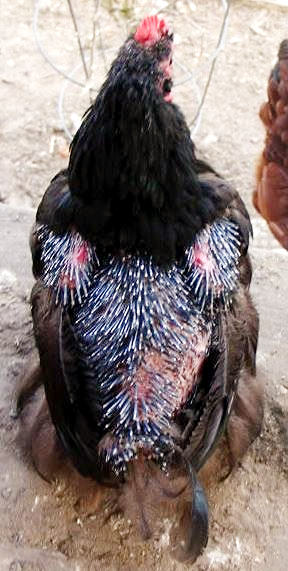

Comments